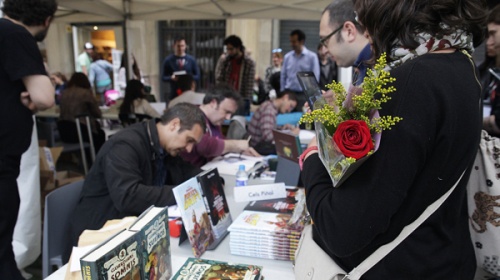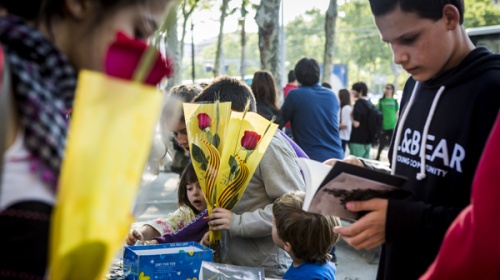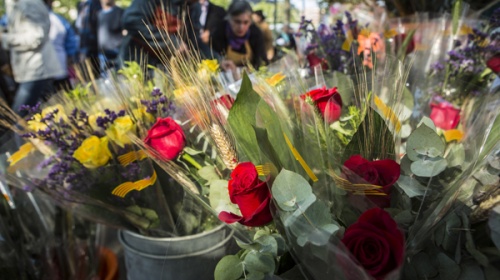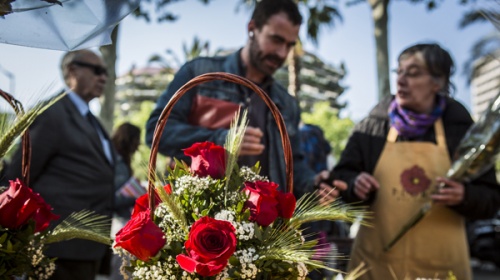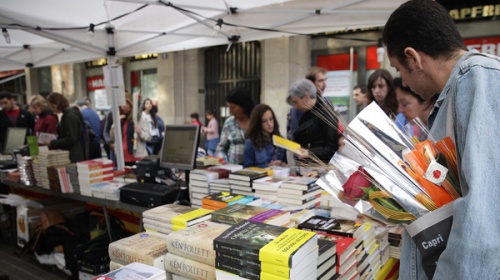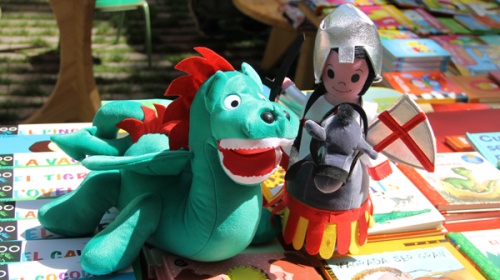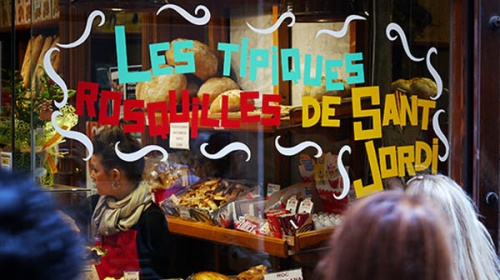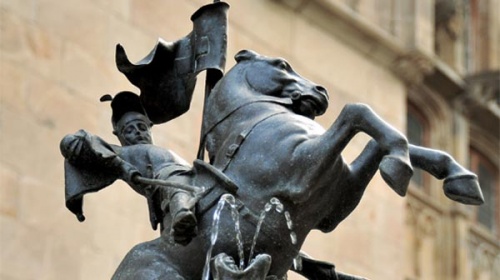Sant Jordi
Activity dates
Dates de celebració
Feast day: 23rd April
Description
Sant Jordi, or St. George, is the patron saint of Catalonia and the Diada de Sant Jordi, St George’s Day, is a festive occasion that, over the years, has become a celebration of Catalan culture. This is why many balconies in the city are decorated with the senyera, the Catalan flag, as they are on other key national dates. In fact, it is a celebration of culture and love, represented by books and roses. The main meeting point in Barcelona is the Rambla, which is packed from end to end with book and flower stalls.
On Sant Jordi’s day it is normal to find books in every language that talk about Catalonia but there are lots of stalls that specialise in books in Catalan, especiallly as this day is seen as a time for promoting and defending the Catalan language and culture.
Reason
The Festa de Sant Jordi is held across the country on 23rd April, the day St. George died. He was under the orders of the Roman emperor Diocletian and refused to obey a command to persecute Christians, so he was martyred and decapitated. Very soon he started to be revered as a martyr and fantastical stories about him began to circulate.
The cult of St. George spread throughout the Catalan Lands in the Middle Ages, though he was venerated as early as the 8th century. And since 1456 he has been the patron saint of Catalonia.
The feast day has been celebrated to a greater or lesser extent since the 16th century but in the 19th century, the rise of the political and cultural movement known as the Renaixença saw it become the most celebrated civic, cultural and patriotic day in Barcelona and Catalonia.
Origins
Barcelona was already holding a Sant Jordi rose fair in the 15th century. It was especially popular with engaged couples, newlyweds and young married couples, which makes us think that the custom of giving a rose started at the fair, held at the Palau de la Generalitat.
We can trace the feast day’s association to books back to the 1920s, when Vicent Clavel i Andrés, a writer from Valencia and the director of the Cervantes publishing house, suggested organising a festival to promote books in Catalonia to the Cambra Oficial del Llibre de Barcelona and the Gremi d'Editors i Llibreters - respectively the Barcelona Official Chamber of Books and the Publishers and Booksellers Guild. They chose 7th October 1927 to hold it on.
During the International Exhibition held in Barcelona in 1929, booksellers decided to set up stalls in the streets, to present their new publications and encourage reading. The initiative was so successful they decided to change the date and establish 23rd April as Book Day, because that is the day when two of the great names in the history of literature died: Cervantes and Shakespeare.
From the very beginning this festive occasion has given a big boost to the output of Catalan publishers and that is still its essence today. But such has been the impact of Catalonia’s book day that, in 1995, UNESCO’s General Assembly declared 23rd April World Book and Copyright Day.
Did you know...
Sabies que...
In Catalonia, lovers’ day (the equivalent of St. Valentine’s Day) is celebrated on 23rd April and it is a day when people symbolically express their love by giving each other a rose or a book. In Valencia, it is celebrated on 9th October and, in English-speaking countries, on 14th February.




